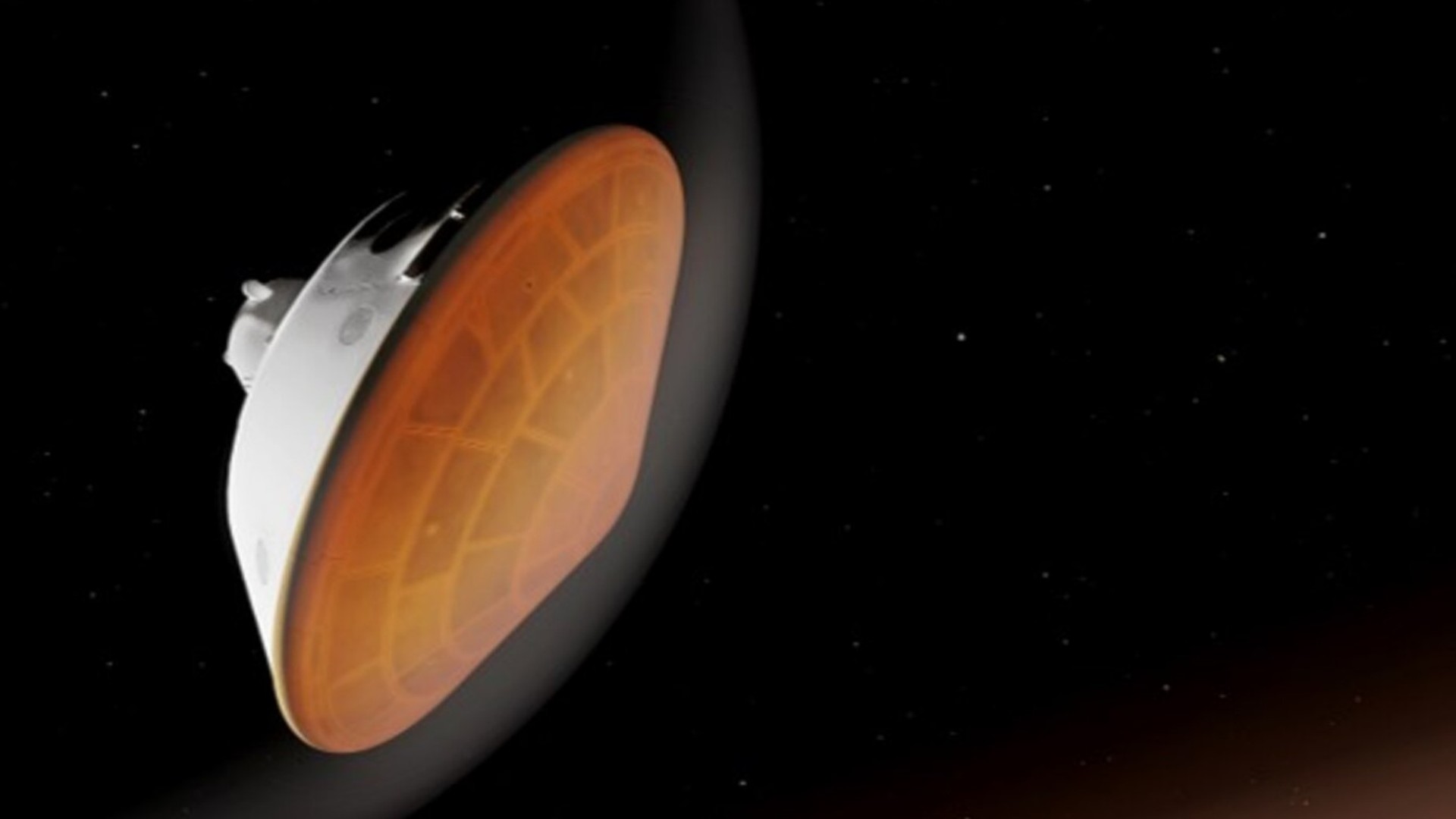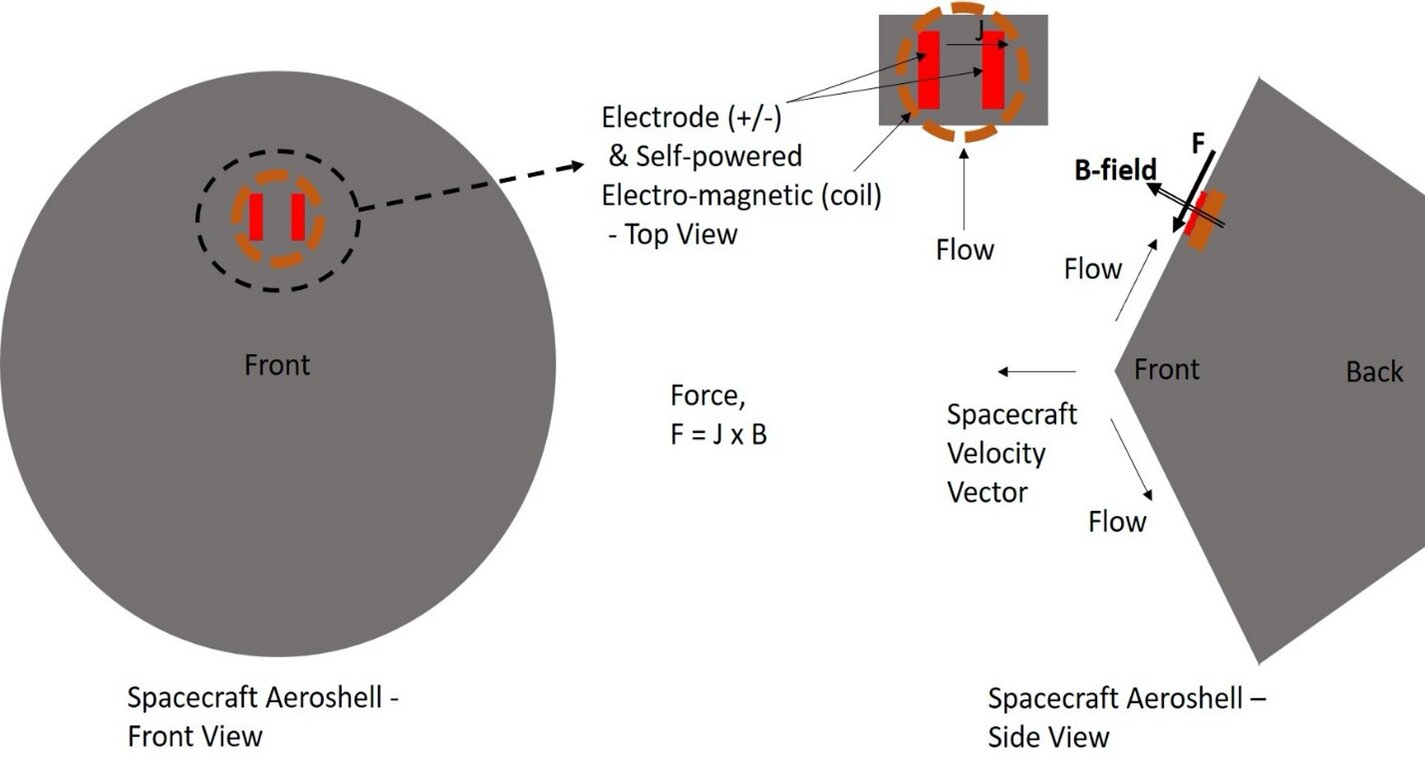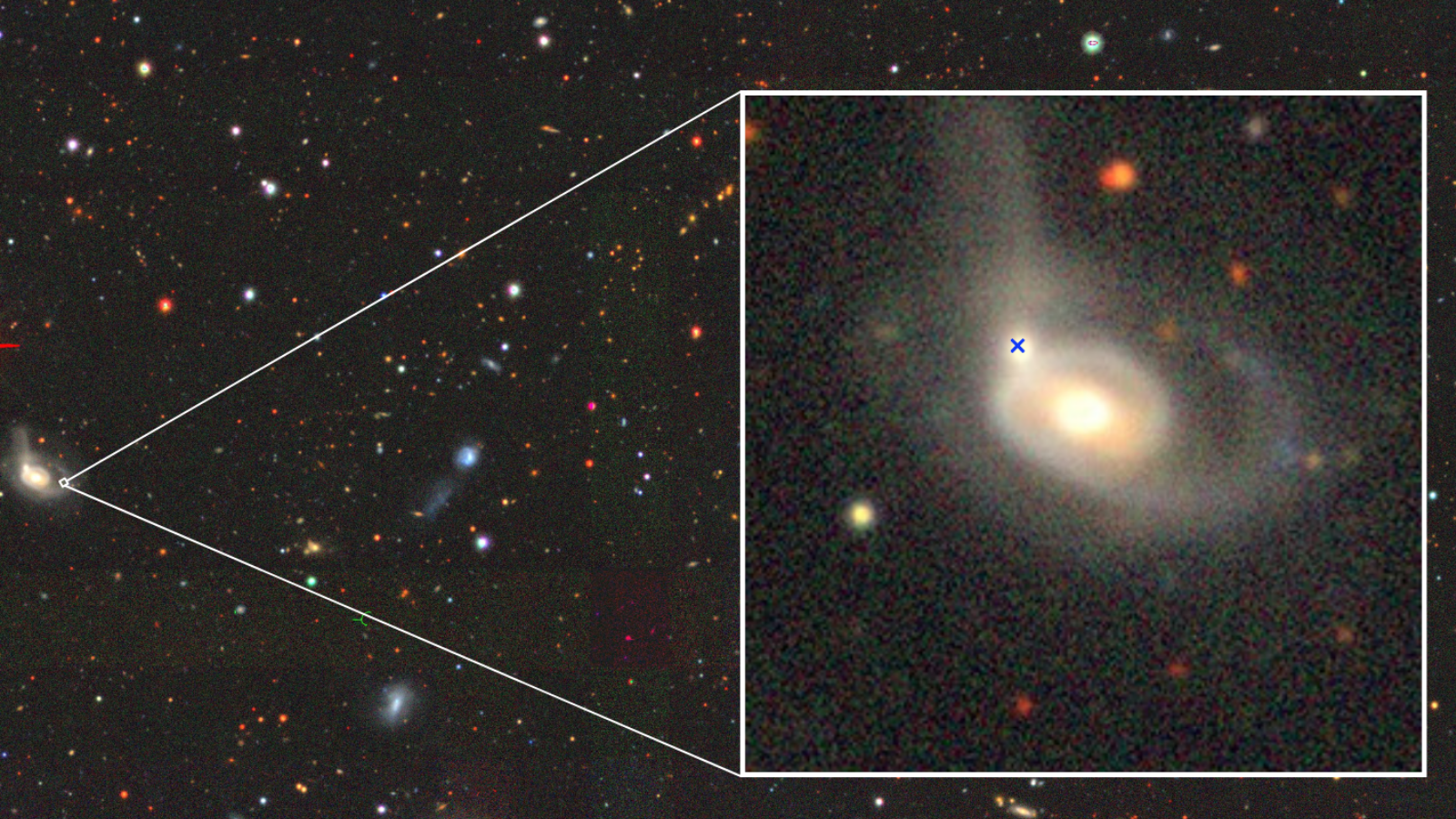Wild new NASA plasma tech reduces drag during hypersonic flight
The agency claims the technology is 'simpler than conventional methods for control of hypersonic craft.'

NASA's Technology Transfer Program is licensing its rights to a radical new form of propulsion that uses electromagnets to control the flow of plasma over aircraft and spacecraft flying at hypersonic speeds.
As vehicles fly through a planetary atmosphere at hypersonic speeds — at least five times faster than the speed of sound — they generate a flow of charged gases. NASA's concept involves two electrodes embedded on the heat shield of an aircraft or spacecraft, along with an electromagnet beneath the heat shield. The pair of electrodes capture the electrical charge in the ionized flow of gas outside the craft, either to charge a battery or to power an electromagnetic coil embedded in the aircraft or spacecraft. That's where things get interesting.
NASA says the electromagnet can then be used to control the flow of gas around the vehicle, either to reduce drag (atmospheric friction) or steer the vehicle. This concept is based on what is known as magnetohydrodynamics, or MHD, which uses electrical and magnetic fields to control the flow of gases or liquids.
According to a notice the agency posted on the government contracting portal SAM.gov on Thursday (Dec. 7), the technology was developed by researchers at NASA's Langley Research Center in Virginia and has been studied for use in a simulated entry into Neptune's atmosphere. A separate 2021 study of the same technology studied it for use in the atmosphere of Mars.
Related: Space Force wants 'Foo Fighter' satellites to track hypersonic missiles
The agency claims its MHD system is "simpler than conventional methods for control of hypersonic craft (e.g., chemical propulsion, shifting flight center of gravity, or trim tabs) and enables new entry, descent, and landing mission architectures."
A separate NASA statement about the technology claims it "harvests power via skimming of ionizing atmospheres" and can help "larger, heavier craft into planetary atmospheres (including Earth) at higher speeds."
Get the Space.com Newsletter
Breaking space news, the latest updates on rocket launches, skywatching events and more!

In March 2023, a group of international researchers funded by the Future and Emerging Technologies (FET) program of the European Commission described a similar MHD system as Langley's, writing that sub-technologies such as high-temperature superconductors have "reached a level of industrial maturity sufficient for them to act as a key enabling technology for this application."
NASA has researched similar magnetohydrodynamic approaches for years, dating back to at least 1965. A 2003 study conducted by researchers at the agency's Marshall Space Flight Center in Alabama cites the long history of research into the topic at Langley, noting that "the NASA Langley program was an extremely successful effort."
The U.S. Department of Defense has also tested and studied various methods of steering and reducing the drag experienced by hypersonic vehicles for decades. For example, the military has researched the use of lasers to reduce the air density in front of a vehicle and looked into leveraging the high rates of spin and vibration of electrically charged surfaces to achieve similar results as the system being licensed by NASA Langley.
NASA invites companies interested in licensing their technology to apply for a license the agency's Technology Transfer Portal at https://technology.nasa.gov/.
Join our Space Forums to keep talking space on the latest missions, night sky and more! And if you have a news tip, correction or comment, let us know at: community@space.com.

Brett is curious about emerging aerospace technologies, alternative launch concepts, military space developments and uncrewed aircraft systems. Brett's work has appeared on Scientific American, The War Zone, Popular Science, the History Channel, Science Discovery and more. Brett has English degrees from Clemson University and the University of North Carolina at Charlotte. In his free time, Brett enjoys skywatching throughout the dark skies of the Appalachian mountains.
-
danR Interesting.Reply
Back in the 60's, as a teen, I envisioned a sort of MHD hypersonic propulsion system. A high-energy linear accelerator would partly ionize the air in front of the nose of an aircraft. Rings of coils energized sequentially down the fuselage would accelerate the ionized gas front to back*. I don't know if the idea was original.
The electric power requirements seemed prohibitive.
But in this passive system, the regenerative factor provides its own ingenious 'power-plant'.
____
* For brevity I've left out some details. -
motie Can somebody expllain why there is a potential difference between the + and - electrodes? It seems to me that the ionized atmosphere would have the same potential everywhere.Reply -
Unclear Engineer Reply
I'm not familiar with this, so I am not clear about how the magnetohydrodynamics is configured. I suspect the developers are not eager to explain it well enough for others to duplicate - e.g., in Russia or China.motie said:Can somebody expllain why there is a potential difference between the + and - electrodes? It seems to me that the ionized atmosphere would have the same potential everywhere.
That said, I would expect the magnetic field extending outside the vehicle surface to cause the ionized gases flowing through it (as they pass along the vehicle surface) to separate the + and - charged ions in the flow to some degree, because the different charges will try to curve in opposite directions in the magnetic field. The plasma stream would then be changed from neutral to 2 flowing currents passing over adjacent areas of the vehicle surface. Those currents can then be used to induce currents in nearby conductors inside the vehicle, just like in any typical transformer.
How that all gets put together in a design that does something useful seems to be the development project that has been going on for more than half of the last century. So, it is probably not simple. -
MasterOgon Interesting. The study of vibration and rotation is also mentioned here. Now I think I know why I was banned twice on the NASA forum for my research on vibration flight, which I also posted here. Despite the fact that you can even publish inertial propulsive nonsense there. After all, they could, as always, call it a mistake and close the topic instead of deleting it and banning me.Reply
